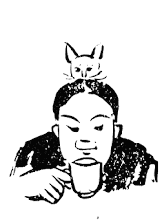Foucault’s “Recipes”/ 福柯的配方
Michel de Certeau, Heterologies: Discourse on the Other (
Chapter 13, Micro-Techniques and Panoptic Discourse
[Page 190]
...
As in cooking, here we find subtle “recipes” to get theories of practices. Yet in the same way that a cooking recipe is punctuated with a certain number of action imperatives (blend, baste, bake, etc.), so also the theoretical operation can be summed up in two steps: extract, and then turn over; first the “ethnological” isolation of some practices for obtaining a scientific “object,” then the logical inversion of this obscure object into an enlightening center of the theory.
The first step is a “découpe”: it isolates a design of some practices from a seamless web, in order to constitute these practices as a distinct and separate corpus, a coherent whole, which is nonetheless alien to the place in which theory is produced. It is the case for Foucault’s panoptical procedures, isolated from a multitude of other practices. By this way, they receive an ethnological form. Meanwhile, the particular genre thereby isolated is taken to be the metonymy of the whole species: a part, observable because it has been circumscribed, is used to represent the undefinable totality of practices in general. To be sure, this isolation is used to make sense out of the specific dynamics of a given technology. Yet it is an ethnological and metonymic “découpage.”
In the second step, the unity thus isolated is reversed. What was obscure, unspoken, and culturally alien becomes the very element that throws light on the theory and upon which the discourse is founded. In Foucault, procedures embodied in the surveillance systems at school, in the army, or in hospitals, micro-apparatuses without discursive legitimacy techniques utterly foreign to the Aufklärung, all become the very ordering principle that makes sense of our own society just as they provide the rationale of our “human sciences.” Because of them, and in them, as in a mirror, Foucault sees everything and is able to elucidate everything. They allow his discourse itself to be theoretically panoptical in its turn. This strange operation consists in transforming secret and aphasic practices into the central axis of a theoretical discourse, and making this nocturnal corpus over into a mirror in which the decisive reason of our contemporary history shines forth.
…
[Page 192]
…
On a first Level, Foucault’s theoretical text is still organized by the panoptical procedures it elucidates. But on a second level, this panoptical discourse is only a stage where a narrative machinery reverses our triumphant panoptical epistemology. Thus, there is in Foucault’s book an internal tension between his historical thesis (the triumph of a panoptical system) and his own way of writing (the subversion of a panoptical discourse). The analysis pretending to efface itself behind an erudition and behind a set of taxonomies it busily manipulates is like a ballet dancer disguised as a librarian. And so, a Nietzschean laughter meanwhile runs through the historian’s text.
Two short propositions may be an introduction to a debate, and may take the place of a conclusion:
1) Procedures are not merely the objects of a theory. They organize the very construction of theory itself. Far from being external to theory, or from staying on its doorstep, Foucault’s procedures provide a field of operations within which theory is itself produced. With Foucault we get another way of building a theory, a theory which is the literary gesture of those procedures themselves.
2) In order to clarify the relationship of theory with those procedures that produce it as well with those that are its objects of study, the most relevant way would be a storytelling discourse. Foucault writes that he does nothing but tell stories (“récits”). Stories slowly appear as a work of displacements, relating to a logic of metonymy. Is it not then time to recognize the theoretical legitimacy of narrative, which is then to be looked upon not as some ineradicable remnant (or a remnant still to be eradicated) but rather as a necessary form for a theory of practices? In this hypothesis, a narrative theory would be indissociable from any theory of practices, for it would be its precondition as well as its production.
Chapter 14, The Laugh of Michel Foucault
[Page 196]
…
This optical style may seem strange. Did not Foucault find the panoptic machine to be at the very heart of the system of surveillance that spread from the prison to all the social disciplines by means of a multiplication of techniques allowing one to “see without being seen”? Moreover, he exhumed and pursued, following them into the most peaceful regions of knowledge, all the procedures that are based on confession and productive of truth, in order to pinpoint the technology by means of which visibility transforms space into an operator of power. In fact, the visible becomes for him the arena of the new stakes of power and knowledge. Already a major locus for Merleau-Ponty, the visible constitutes for Foucault the contemporary theater of our fundamental options.


没有评论:
发表评论